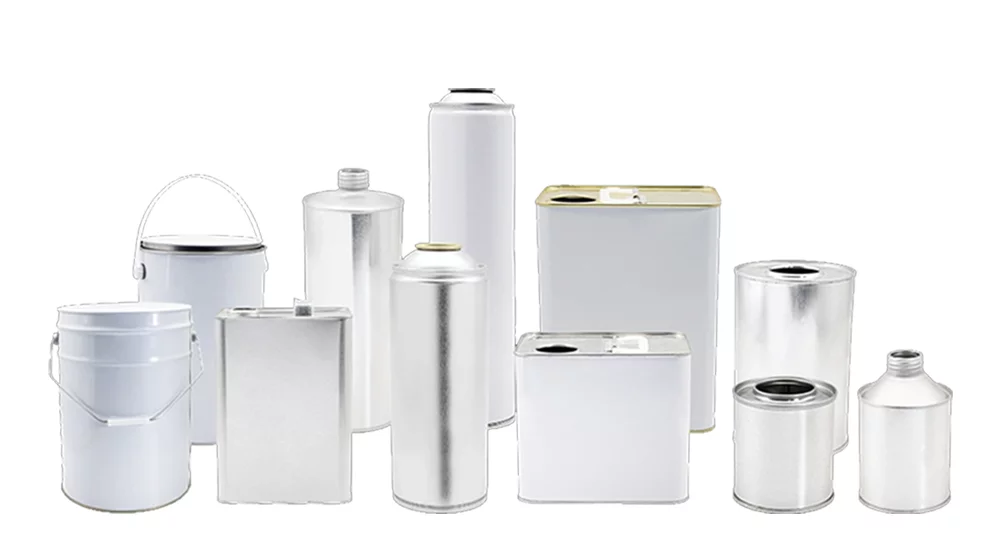Living with asthma can be challenging, but advancements in medication have greatly improved the quality of life for those managing this condition. One of the key tools in asthma management is the inhaler. Whether you’re new to asthma or have been using inhalers for years, understanding the full scope of their function, safety, expiration, and proper usage is essential. This guide provides an in-depth look at asthma inhalers, addressing all the crucial aspects, from historical background to the latest safety guidelines, expert opinions, and practical tips.

The History of Asthma Inhalers
Asthma has been a known condition for thousands of years, with references to it dating back to ancient Egypt, Greece, and China. However, the first recorded use of an inhaler dates back to the 1950s, when the idea of delivering medication via aerosol became feasible. Before inhalers, asthma treatments were limited to oral medications, which had systemic side effects and were less effective.
In the 1950s, a breakthrough in asthma treatment came in the form of the “metered-dose inhaler” (MDI), which delivered medication directly to the lungs in a controlled dose. This marked the beginning of the modern era in asthma care. Early inhalers were bulky, but over time, designs became smaller, more portable, and user-friendly, making them a cornerstone in asthma management today.
The development of inhalers also marked an advancement in drug formulations. While early asthma medications primarily consisted of bronchodilators like epinephrine, modern inhalers now deliver corticosteroids, beta-agonists, and combination drugs that help manage both acute symptoms and long-term inflammation.
What is an Asthma Inhaler?
An asthma inhaler is a portable medical device used to deliver medication directly into the lungs. The inhaler typically contains either a bronchodilator (a drug that helps relax the muscles around the airways) or a corticosteroid (a drug that reduces inflammation in the airways). The aerosol inhaler, in particular, uses a propellant to create a fine mist that can be inhaled quickly and efficiently into the lungs.
Types of Asthma Inhalers
There are several different types of inhalers available, each with a specific purpose. Understanding the types and their uses is critical for users to select the most appropriate inhaler for their condition.
Metered-Dose Inhalers (MDIs)
MDIs are the most common type of inhaler. They use a pressurized canister to deliver a set dose of medication as a fine mist. MDIs are portable, easy to use, and effective for many people with asthma. However, correct technique is crucial for them to be effective.
Key Features:
-
Delivers medication in a fixed dose with each press.
-
Often used with a spacer (a device that helps deliver the medication more effectively by increasing the time the aerosol stays in the airways).
Pro Tip: Always coordinate your breathing with the release of the medication. Inhale deeply as you press the inhaler to ensure maximum effectiveness.
Dry Powder Inhalers (DPIs)
Unlike MDIs, DPIs do not require a propellant. They deliver medication in the form of a dry powder, which is inhaled into the lungs when the user inhales through the device. DPIs require a strong, steady inhalation to ensure that the medication reaches the lungs effectively.
Key Features:
-
Requires a deep, fast inhalation to activate the medication.
-
Does not require the use of a spacer.
-
Typically used for maintenance treatment in asthma.
Famous Quote on Inhalers:
“The inhaler is a lifeline, but the way you use it makes all the difference. It is essential to use your inhaler with precision and technique.” – Dr. Emily Ward, Respiratory Expert.
Soft Mist Inhalers (SMIs)
SMIs are a newer form of inhaler technology. They generate a slow-moving mist that makes it easier to inhale the medication. This technology can be particularly beneficial for people who find it difficult to coordinate their breathing with traditional MDIs.
Key Features:
-
Delivers a fine mist of medication that remains in the air long enough for proper inhalation.
-
Easier to use for patients with limited lung function or coordination issues.
Nebulizers
A nebulizer is a device that turns liquid medication into a mist or aerosol, which is inhaled via a mouthpiece or face mask. Nebulizers are typically used in hospital settings or at home for people with severe asthma, as they are able to deliver a higher dose of medication over a longer period of time.
Key Features:
-
More suitable for patients who cannot use MDIs or DPIs effectively.
-
Often used for children or individuals with severe asthma.

How Do Asthma Inhalers Work?
Asthma inhalers deliver medication directly to the lungs, where it can act on the airways to either reduce inflammation or relax bronchial muscles. Inhalers are designed to be fast-acting and efficient, providing quick relief from asthma symptoms such as wheezing, shortness of breath, and chest tightness.
When used correctly, inhalers can deliver the medication deep into the lungs where it is needed most. The effectiveness of an inhaler depends on its design, the user’s technique, and the type of medication used.
How Asthma Inhalers Work
Asthma inhalers come in various forms, including metered-dose inhalers (MDIs), dry powder inhalers (DPIs), and nebulizers. Each has its mechanism of action, but their primary goal is the same: delivering medication directly to the lungs to relieve symptoms of asthma.
-
Metered-Dose Inhalers (MDIs): These are the most common type of inhalers, using a pressurized canister to release a precise dose of medication. MDIs are often paired with a spacer to help ensure the medication reaches the lungs effectively.
-
Dry Powder Inhalers (DPIs): DPIs are breath-activated devices that deliver a powdered medication. They are often preferred for their ease of use and portability.
-
Nebulizers: These devices turn liquid medication into a fine mist, which is then inhaled. Nebulizers are typically used for people who have difficulty using MDIs or DPIs, such as young children or people with severe asthma.
How to Use an Asthma Inhaler Properly
Using an inhaler correctly is vital to ensure the medication works effectively. The steps for using different types of inhalers may vary, but the following general guidelines will help ensure correct usage.
For MDIs (Metered-Dose Inhalers):
-
Shake the inhaler: Hold the inhaler upright and shake it well to mix the medication inside.
-
Breathe out fully: Exhale completely to empty your lungs.
-
Position the inhaler: Hold the inhaler about 1–2 inches from your mouth, or place it in your mouth if using a spacer.
-
Press and inhale: Press the inhaler to release the medication and inhale deeply and slowly at the same time.
-
Hold your breath: After inhaling, hold your breath for 5–10 seconds to allow the medication to settle in the lungs.
-
Exhale slowly: Release your breath slowly and repeat the process if necessary, as prescribed by your doctor.
For DPIs (Dry Powder Inhalers):
-
Load the medication: Follow the manufacturer’s instructions for loading the powder into the inhaler.
-
Breathe out fully: Exhale completely to prepare for a full inhalation.
-
Inhale forcefully: Take a strong, deep breath in through the inhaler. This activates the powder.
-
Hold your breath: As with MDIs, hold your breath for 5–10 seconds to allow the medication to settle.
-
Exhale slowly: Breathe out slowly and repeat the process if necessary.
Tip: Never exhale into the inhaler as this can release moisture, which can affect the powder in DPIs.
Asthma Inhaler Safety
The safety of asthma inhalers is a crucial consideration for users, as improper use can result in ineffective treatment, side effects, or even injury. Here are key safety tips:
-
Correct Usage: Ensure you are using your inhaler correctly. Many people mistakenly believe they can just puff and go, but inhalers require a specific technique. For MDIs, you must shake the inhaler, exhale fully, and inhale slowly and deeply as you activate the device. For DPIs, you must breathe in forcefully to ensure proper medication delivery.
-
Dosage: Follow your doctor’s prescribed dosage. Overuse of inhalers, particularly those containing corticosteroids or bronchodilators, can lead to side effects such as jitteriness, heart palpitations, or oral thrush.
-
Cleaning: Regular cleaning of your inhaler is necessary to prevent clogs and ensure the device functions properly. For MDIs, rinse the mouthpiece under warm water once a week. DPIs should be cleaned according to manufacturer instructions to maintain their effectiveness.
-
No Sharing: Never share your inhaler with anyone else, as this can lead to the spread of infections or improper usage.
-
Monitor Side Effects: Keep track of any side effects you experience, such as headaches, dizziness, or nausea. If these persist, consult your healthcare provider for possible adjustments to your treatment plan.

Does an Asthma Inhaler Expire?
Yes, asthma inhalers have an expiration date. The expiration date is an important aspect to consider because the potency of the medication can decrease over time. Using an expired inhaler may result in reduced effectiveness, which could worsen your asthma symptoms.
-
Why Expiration Matters: The effectiveness of the medication in the inhaler decreases as it nears the expiration date. The pressurized canister can also lose pressure over time, which affects the metered dose. For optimal results, always use your inhaler before the expiration date, and dispose of any expired inhalers safely.
-
Signs of Expired Inhalers: If your inhaler feels lighter than usual, or if it produces a weak or no spray, it may be expired. Additionally, some inhalers have an indicator that shows how many doses remain. If the count runs out, it’s time to replace the inhaler.
-
Storage Conditions: Proper storage can extend the life of your inhaler. Keep it in a cool, dry place and avoid extreme temperatures. Storing it in a hot or humid environment can accelerate the expiration process and reduce its efficacy.
Expert Opinions on Asthma Inhaler Usage
Several medical experts and organizations emphasize the importance of proper inhaler technique and regular monitoring of asthma control. Dr. Michael Kaliner, an expert in pulmonary medicine, states, “Asthma inhalers are life-saving tools, but they are only effective when used correctly. Education on proper technique should be a key part of asthma management.”
The American Lung Association also stresses, “Inhalers are the cornerstone of asthma treatment, but it is critical for patients to work closely with their healthcare providers to ensure their inhalers are being used correctly and replaced regularly.”
Frequently Asked Questions (FAQs)
1. How do I know if my inhaler is empty?
If your inhaler feels light or doesn’t release a mist when you press it, it might be empty. Many MDIs have a dose counter to help track remaining doses.
2. Can I use my inhaler if it’s past the expiration date?
Using an expired inhaler is not recommended. The medication may not be effective, and using it could lead to insufficient relief during an asthma attack.
3. Can I carry my inhaler in my pocket?
Yes, but ensure the inhaler remains in a safe, upright position to avoid leakage or damage. Avoid placing it in extreme heat or cold.
4. Why does my inhaler make a whistling noise?
A whistling noise typically indicates that you’re inhaling too quickly. Try to slow down your inhalation for better medication delivery.
5. How often should I replace my inhaler?
Inhalers should be replaced according to their expiration date or when the dose counter reaches zero. Even if there is medication left, it may no longer be effective.
Factors to Consider When Choosing an Asthma Inhaler
-
Type of Asthma: Your doctor will recommend an inhaler based on whether your asthma is primarily triggered by allergies, exercise, or environmental factors.
-
Age and Ability: Younger children or people with mobility issues may benefit from nebulizers, while older children and adults may prefer MDIs or DPIs.
-
Comorbid Conditions: If you have other conditions like COPD or emphysema, a combination inhaler might be recommended.
-
Cost and Insurance: Some inhalers can be expensive, so it’s important to check with your insurance provider to ensure your preferred inhaler is covered.
-
Lifestyle: If you lead an active lifestyle or travel frequently, portability and ease of use may be essential factors when choosing an inhaler.
Conclusion
Asthma inhalers have revolutionized asthma treatment and have empowered millions to manage their condition effectively. Understanding their history, proper usage, safety measures, and expiration concerns can make all the difference in maintaining optimal asthma control. By adhering to the recommended guidelines, you can ensure your inhaler is as effective as possible, helping you breathe easier and live better.
FANXUN is a world-class manufacturer and supplier, offering asthma inhalers and aerosol products in various specifications and shapes. Their high-quality products meet international standards and provide reliable solutions for asthma patients worldwide. With a strong commitment to innovation, FANXUN ensures that their inhalers are not only effective but also safe for all users.






















